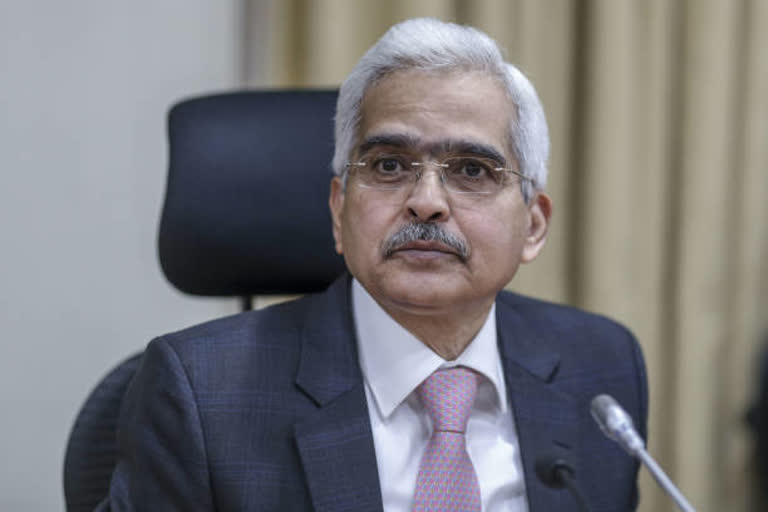મુંબઈઃ ગુરૂવારે જાહેર થનાર ભારતીય રિઝર્વ બેન્કની નીતિની જાહેરાતને લઈ અર્થશાસ્ત્રીમાં ભારે ઉત્સુકતા જોવા મળી રહી છે. કારણ કે, આ વર્ષે રિઝર્વ બેન્કની કામગીરી ઘણી અઘરી સાબિત થનારી છે.
કેન્દ્ર સરકારની આવક કરતાં ખર્ચ વધુ છે. આ સાથે જ ખરીદ કિંમતમાં પણ ખૂબ વધારો થઈ રહ્યો છે. જેથી નાણાંકીય સમિતિને આર્થિક નીતિ અંગે નિર્ણય લેવા માટે અઘરા થઈ પડ્યાં છે. 1 ફેબ્રુઆરીએ કેન્દ્રીય બજેટ રજૂ કરતી વખતે કેન્દ્રીય નાણાં પ્રધાન નિર્મલા સીતારમણે રાજકોષીય ખોટને ઘરેલું ઉત્પાદન (DDP) 3.8 ટકા સુધી વધવાની શક્યતા વ્યક્ત કરી હતી. આ પહેલા તે 3.3 ટકા હતી.
ઉલ્લેખીનીય છે કે, ડિસેમ્બરમાં ડુંગળી અને ટામેટાના ભાવમાં વધાવાથી ફુગાવાનો દર 7.3 સુધી પહોંચ્યો હતો. આ આંકડો RBIની રાહત મર્યાદા બહાર 6થી 1.3 ટકા વધુ છે. HDFC બેન્કના અર્થશાસ્ત્રીઓના એક અહેવાલમાં પ્રમાણે, "બજેટની જાહેરાતો ફુગાવાનો સ્વભાવ નથી, તેથી રિઝર્વ બેંક જૂનની સમીક્ષામાં દર ઘટાડી શકે છે." MPC દર બે મહિને રેપોરેટની સમીક્ષા કરે છે. આ જ ક્રમમાં, ફેબ્રુઆરી અને માર્ચ માટેનો રેપોરેટ ગુરુવારે જાહેર કરવામાં આવશે.
Intro:Body:
The six-member Monetary Policy Committee (MPC) of the RBI has a tough job in hand as there is a growing concern about the widening difference between income and expenditure of the union government and high consumer prices.
Mumbai: Economists are keen on Reserve Bank of India’s (RBI) policy announcements on Thursday.
The six-member Monetary Policy Committee (MPC) of the RBI has a tough job in hand as there is a growing concern about the widening difference between income and expenditure of the union government and high consumer prices.
While presenting the Union Budget on February 1, Finance Minister Nirmala Sitharaman projected the fiscal deficit to widen to 3.8 per cent of Gross Domestic Product (GDP) against the earlier estimate of 3.3 per cent.
Besides, official data shows, retail inflation in December touched 7.3% due to high onion and tomato prices. This figure is 1.3% higher than RBI’s comfort limit of 6%.
A higher fiscal deficit in simple terms means the government will go in for more market borrowing leading to hardening of interest rate which in turn will put pressure on inflation.
The Central Bank has three options to choose from – not changing repo rate, reducing it and repo rate hike. Repo Rate is the key policy rate that influence money flow in the market, which in turn has a say on growth prospects and prices.
Experts divided on which one is the right choice given the need to boost growth and contain rising prices.
While experts rule out repo rate hike given the need for liquidity in the market, the choice will be between reducing repo rate from the current 5.15% and maintaining the status quo.
Status quo may disappoint industrialists looking for much cheaper credit to kick start new projects, whereas reducing repo rate likely to trigger further inflation.
Some suggest that the RBI can maintain status quo for now with an understanding of rate cut in coming months.
“Since budget announcements are not inflationary in nature, Reserve Bank can cut rates as early as in the June review”, a report by HDFC Bank's economists said.
The MPC reviews the Repo Rate every two months and the repo rate for February and March will be announced at 11.45 on Thursday.
(With inputs from PTI)
Conclusion:



